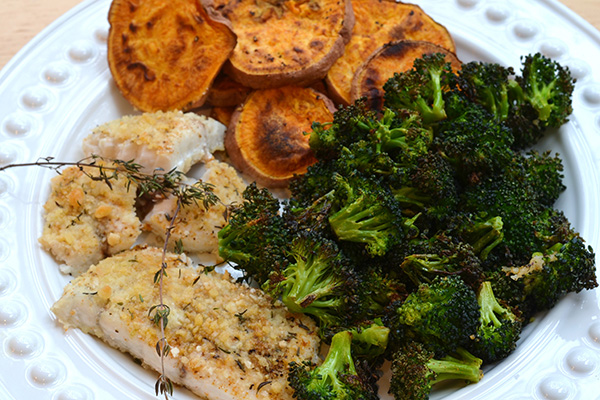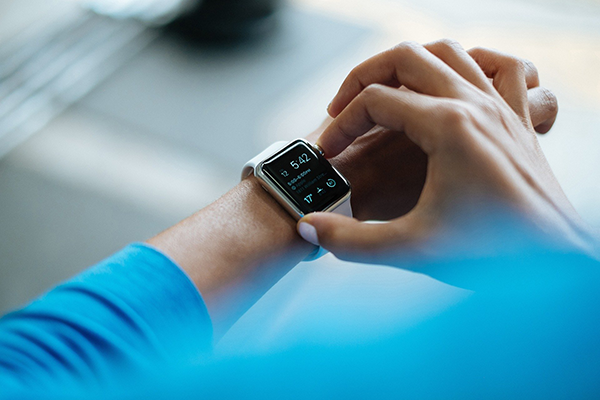Over the last decade, more and more people have turned to intermittent fasting as a tool to improve metabolic flexibility, decrease the risk of chronic disease, optimize their longevity and simplify their lives. Fasting needs to be done in a way that works with one’s lifestyle, personality and physiology in order to optimize its health benefits. If you are interested in making intermittent fasting a lifelong habit, read on to set yourself up for success.
Check out these tips if you are giving intermittent #fasting a first, second or even third try. #saslife Click To Tweet1. Start with a solid foundation.
- To keep you satisfied and minimize cravings, balance your meals with real foods including adequate protein, fiber (from non-starchy vegetables and possibly some starchy vegetables, whole grains, legumes or fruit) and healthy fats.
- If you eat frequently throughout the day, slowly work up to having 3 full, balanced meals with no snacks or sweetened beverages in between. Depending on your health goals, having 3 meals and no snacks in a 12-hour eating window may be the intermittent fasting/time-restricted eating pattern that works best for you.
2. Focus on long-term health and sustainable lifestyle changes.
- Once you’ve mastered eating in a daily 12-hour window, you might shorten your eating window to 8-10 hours for additional gut rest and to continue to keep insulin levels lower for longer. Over time (weeks or months), you may decide to work up to some 18-20 hour fasts or even alternate day fasts to further address metabolic dysfunction and increase autophagy (cleaning up and recycling old cell parts and recycling their components including protein).
- Making sustainable changes and seeing improvements in blood sugar, cholesterol, blood pressure, inflammation, body composition, etc. may take longer than you think depending on their severity and how long you’ve lived with imbalances. Be patient and commit to working on your intermittent fasting lifestyle for 6-12 months before opting out unless you have a valid medical reason or life event making it a good idea to stop.
- Give yourself time to figure out what works and feels best for you. Someone who is less metabolically healthy with more body fat may eventually benefit from longer and/or more frequent fasts, but experiencing those benefits may take more time due to the metabolic changes that need to take place during the transition.
- To make the most of intermittent fasting for a lifetime, you will need to be okay with some ambiguity as you learn to listen to your body. As your body changes, try to notice if you are no longer getting the results you want, and make adjustments.
3. Work with your health care provider.
- If you are on daily medications that need to be taken with food, adjustments may be needed.
- If you are on any medications that may lower blood sugar or blood pressure, these may need to be reduced over time. Monitoring glucose or blood pressure while fasting is advisable.
- Use caution if you have another medical condition that may be affected by restricting the times that you eat.
- If you are under 18, pregnant, breastfeeding or underweight/malnourished, you should not be intentionally fasting.
- It’s a good idea to check in with a health care professional who has some knowledge on intermittent fasting if you want to extend your fasting to 20 hours or more.
- If you eventually want to do a periodic fast of more than 72 hours, seeking medical supervision is a must even if you are in good health.
4. Have a firm but flexible mindset.
- It can be mentally and physically challenging when extending the time between meals, but stay positive knowing that you can do hard things, and hunger is not an emergency. Plan to extend your fasting period on days when you are somewhat busy but also don’t have to be at the top of your game. Set a goal for how long you plan to fast each day and stick with it.
- A headache, some fatigue and even some brain fog here and there are normal as you attempt to increase your metabolic flexibility. If, however, you feel physically unwell and suspect you may be pushing too hard (e.g., dizziness and nausea that doesn’t pass quickly), be ready to break your fast with something nourishing, congratulate yourself for trying and try again another day.
5. Connect with health-conscious, like-minded individuals and communities.
Whether you love to share your own experiences or prefer to be a quiet observer, support from other intermittent fasters can make the difference between staying committed versus giving up.
- You probably already know an intermittent faster or two who you can turn to when your resolve is dwindling. Don’t be afraid to reach out to family and friends if you think they can be supportive.
- There are also tons of fasting podcasts, books, YouTube channels and online communities that offer a wealth of information and encouragement. Popping on a podcast to hear about the experiences of other intermittent fasters can motivate you to reach your goals.
- A few of my favorite people to follow are Gin Stephens, Jason Fung, Nadia Patequana, Megan Ramos, Pradip Jamnadas and Mindy Pelz. They all have slightly different viewpoints, so find an expert with a philosophy that resonates with you.
6. Plan activities to keep your mind off food.
People eat for entertainment, comfort, social connection, to activate reward centers in our brains and so many other reasons. Eating fewer meals and snacks makes it obvious how much time we previously spent planning, preparing and eating food. It’s normal to feel that something is missing when we change this pattern.
- Have some projects ready to tackle during times you would normally be focused on food. Go for a walk, read a good book, clean a closet or engage yourself in another activity during times when you start to get hungry.
- If you need to make a meal for others, prepare it ahead when you are not fasting. You can also train yourself to think of preparing a meal for others as any other household chore. Listen to music or a motivating podcast while you’re cooking for others.
- Don’t miss out on social events that involve food. Move your eating window to accommodate the event, or be brave, attend the event and engage in great conversation while sipping on some beverages that won’t break your fast.
7. Beware of beverages.
Do you look forward to your favorite fluids like coffee with creamer or fruit-flavored water to add some interest to the day? Unfortunately, those comforting flavors could be raising insulin levels and making it harder to fast.
- While fasting, it’s best to stick with plain water, sparkling unflavored mineral water, plain black coffee, plain black or green tea or unflavored electrolyte water to avoid risking making fasting harder or hindering your results.
- If you really want your morning coffee while fasting but don’t like it black yet, add a small pinch of salt to neutralize the bitterness, and have confidence that your taste perception will change over time. After a couple weeks, you may even find that you start to enjoy your black coffee…I was pleasantly surprised when it happened for me.
8. Use technology if it encourages you.
If data and tracking your progress appeals to you, use a fasting app. Pressing the “start fasting” button can be helpful for accountability and decreasing evening snacking. Ketone meters also can be encouraging for some people by showing when you are breaking down fat for fuel, but as your body gets more efficient at using those ketones, the information you get from a meter is less helpful.
9. Recognize when enough is enough.
The extra energy and decreased hunger that often accompanies fasts may be a slippery slope.
- If, after an initial adjustment period, you start to notice an increased urge to binge when your eating window is open, increased trouble sleeping or increased anxiety, this could be a sign that you are fasting too much for your body.
- People who experience insomnia while doing fasts >24 hours may benefit from a small (500-600 calorie) meal on their “fasting” day while still seeing great progress toward their goals.
- Fasting over 24 hours multiple times per week is a therapeutic approach meant to target specific health conditions for a finite time period until a goal is reached (e.g., 3-6 months to improve insulin sensitivity and blood sugar). Then moving to a less intense fasting pattern seems to be beneficial.
- In general, shorter and/or less frequent fasting works better for folks with less body fat to spare.
10. Make your meals count.
- Meal plan weekly to make healthy choices easier when your eating window is open.
- Focus on eating full, well-balanced meals made with real food to help your body recognize when it has been refueled.
- Have food ready ahead of time to avoid unhealthy temptations when you are ready to break your fast. Don’t break your fast with ultra-processed foods like chips, white pasta, sweets, etc., and break your fast at least 2-3 hours before bedtime.
- Sit down at a table and eat mindfully when it’s time to eat. Once you’ve eaten a full portion, take a 15-30 minute break, and only go back for more if you are still hungry after that time.
- For longer fasts (>48 hours), starting with something easy to digest like bone broth or soup and then waiting at least 30 minutes may be helpful.
Greek Red Lentil Soup
Makes 6 servings
Recipe from: The Mediterranean Dish
PRINT RECIPE
Ingredients
3 Tbsp extra virgin olive oil
1 large onion, chopped
3 garlic cloves, minced
2 carrots, chopped
1 Tbsp dried oregano
1 ½ tsp cumin
1 tsp rosemary
½ tsp red pepper flakes
2 dry bay leaves
1 cup crushed tomatoes (from a can)
7 cups vegetable broth
2 cups red lentils, rinsed and drained
Salt, to taste
zest and juice of 1 large lemon
Fresh parsley for garnish
Crumbled feta cheese to serve, optional
Instructions
- Heat extra virgin olive oil in a pot until shimmering but not smoking. Add onions, carrots and garlic. Cook 3 to 4 minutes, stirring regularly. Add spices and bay leaves. Cook for just a few seconds till fragrant, keep stirring so spices don't burn.
- Add crushed tomatoes, broth and lentils. Season with salt. Bring to a boil, then lower heat to simmer for 15 to 20 minutes, until lentils are fully cooked.
- Remove from heat. If you have the time, let soup cool a bit before using an immersion blender to puree. Pulse a few times till you reach the creamy consistency you are looking for.
- Return soup to heat, and stir to warm through. Add lemon zest, lemon juice and fresh parsley.
- Transfer soup to serving bowls and top with parsley. If you like, top each bowl with a sprinkle of feta cheese.
NOTE: Be sure the lentils are fully cooked before blending. If you do not have an immersion blender, you can use a food processor or a stand-up blender to blend the soup in batches.







